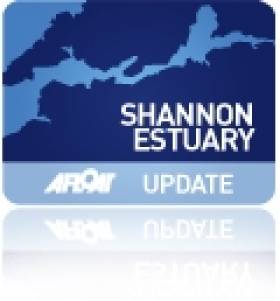Displaying items by tag: Mermaids
Sailing School Navigates Beyond the Gloom
The Principal John Moore has discounted all prices by 20 to 30%. All 2009 sailors returned in 2010 and brought friends with them. The French network of the newly appointed Director of Sailing Hugues Traonmilin has brought French families to the island and the French sailors were mixed with the Irish and British children and adults with great success. In addition to a busy summer season, 60 students of a South East College came for the very first time to the Sailing School in March 2010 as part of the Transition Year programme. They were hosted with full board accommodation at the Sailing School Guest house.
Definitely the location of the Sailing School plays a big part in this success story. Heir Island is located in the middle of Roaring Water Bay half way between Schull and Baltimore. Whatever direction you sail from the Sailing School beach, you'll encounter wonderful maritime landscapes and crystal clear waters. The Topaz dinghy fleet may sail to 3 or 4 different sandy beaches on one sailing day. The 3 Dublin Bay Mermaids sailing in flotilla explore the surrounding islands of Castle Island, Sherkin Island, the 3 Calves Islands and of course the Carthy's Islands to visit the seals colony.
Such a fantastic location has orientated the programme of this Sailing School towards the "Adventure" courses of the Irish Sailing Association. The school offers Adventure 1 & 2 courses as their "speciality" course.
2011 perspectives are already very encouraging with a second college to be hosted in Spring for a 10 day transition programme meanwhile the first one is returning after excellent feedback of the 2010 students and teachers. Being a family run business makes this small company very flexible and the range of their activities covers young sailors from 8 years old to adults, groups and families, on dinghies or on a traditional Heir Island Lobster Boat, and on kayaks if you don't want to sail. Also as a qualified Yachtmaster Instructor, the director of sailing has facilitated individually tailored sail training for yacht owners aboard their own yacht, an option that has proven both practical and successful.
More information HERE.
Foynes Prepares to Stage Mermaid Week
Foynes Yacht Club on the Shannon Estuary is hosting the National Mermaid Championships, which will commence on Saturday, July 31, and which will be taking place for a full week at Cooleen Point.
Quite an amount of preparation and organisation is taking place to ensure that it will be one of the most successful championships to date.
Entries are expected to exceed 40 boats that will compete in the championship's. These boats are a classic 1932 design from all corners of Ireland, which will be racing daily for seven days on the majestic Shannon Estuary waters to the picturesque and historic port village of Foynes.
The competition brings with it a festival atmosphere, as over 150 sailors with their families and friends settle in for a week packed, competitive and social activities by day and night.
An action-packed programme of events will take place during the championships 'off the water', and this will commence on Saturday, July 31 with Karaoke; on Sunday, August 1 music will be provided by 'Motive'.
On Monday, August 2 a 'Family Fun Day' in Cooleen Point will take place, and this will feature a fundraising family fun, and games in aid of the Royal National Lifeboat Institution.
Besides such activities as a Bouncy Castle, Bar-B-Que, Karaoke and many more events, and the first ever sponsored Mud Splat Obstacle Course race, which will make very entertaining viewing.
And an added spectacle on Monday an air display from the Coastguard Helicopter based in Shannon, Co. Clare will take place.
A quiz night will take place on Tuesday, August 3, and on Wednesday, August 4, a Traditional music session will take place; on Thursday, August 5 a Comedy night is organised.
The Royal National Lifeboat Institution has saved more than 139,000 lives since its foundation in 1824. Through the years, there have been countless stories of courage against a background of technological developments and social change.
The charity was founded as the national institution for the preservation of life from shipwreck after an appeal was made by Sir William Hillary. Hillary lived in Douglas on the Isle of Man, and had witnessed the wrecking of dozens of ships from his home.
The name was changed to the Royal National Lifeboat Institution in 1854, and cork lifejackets were first issued to crew members in the same year.
In 1891, the first RNLI street collection was held in Manchester, and the 20th century saw the RNLI continue to save lives through two world wars.
The lifeboats moved from sail and oar power to petrol and diesel, and the first women joined their crews.
Recent years have seen major develpments with the introduction of RNLI lifeguards in 2001, and the first lifeboat station on an inland water in the same year.
There are 43 RNLI lifeboat stations in Ireland, where the nearest to Foynes is in Kilrush. The money raised from Mermaid week for the RNLI will be put to good use by RNLI personnel, where it will fund new equipment including lifeboats, seafaring wear, lifejackets and much more.
Foynes Yacht Club, Commodore Tom Murray is making a special appeal to all Mermaid sailors, club members and friends to come to the club and support this very worthy cause. 'The RNLI relies on the support of all the sailing and yacht clubs in the country for donations to keep this very important sea rescue operation running', he said.
Crew and assistance for crash boats will be wanted for the championships, so any member, who is interested in sailing or would like to help in the running of the championships are asked to please contact Commodore Tom Murray on 087 2563515; Mermaid Class Captain, Conor Roche on 086 8030343 or Cruiser Class Captain, Alan McEneff on 086 2568280 immediately.
The club website is www.foynesyachtclub.com






























































